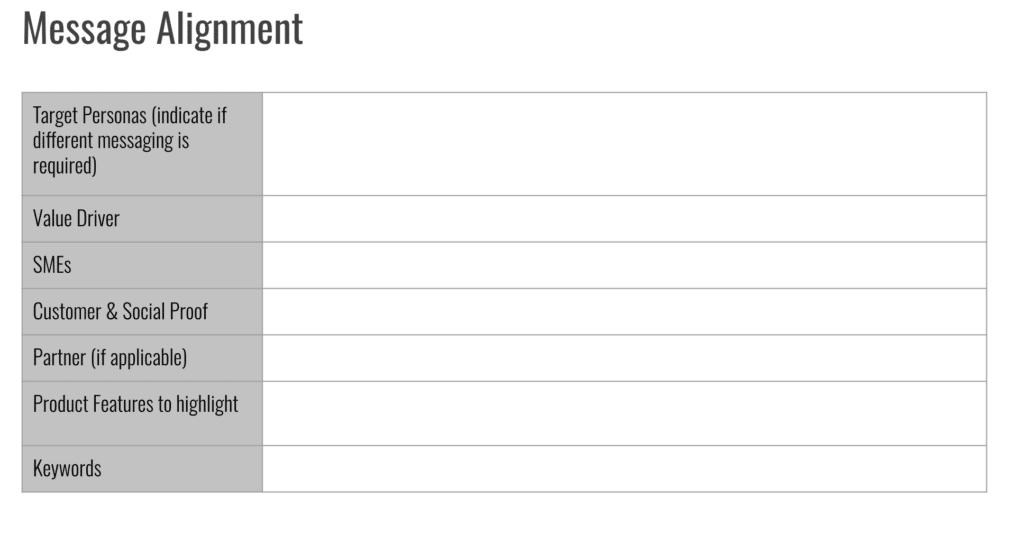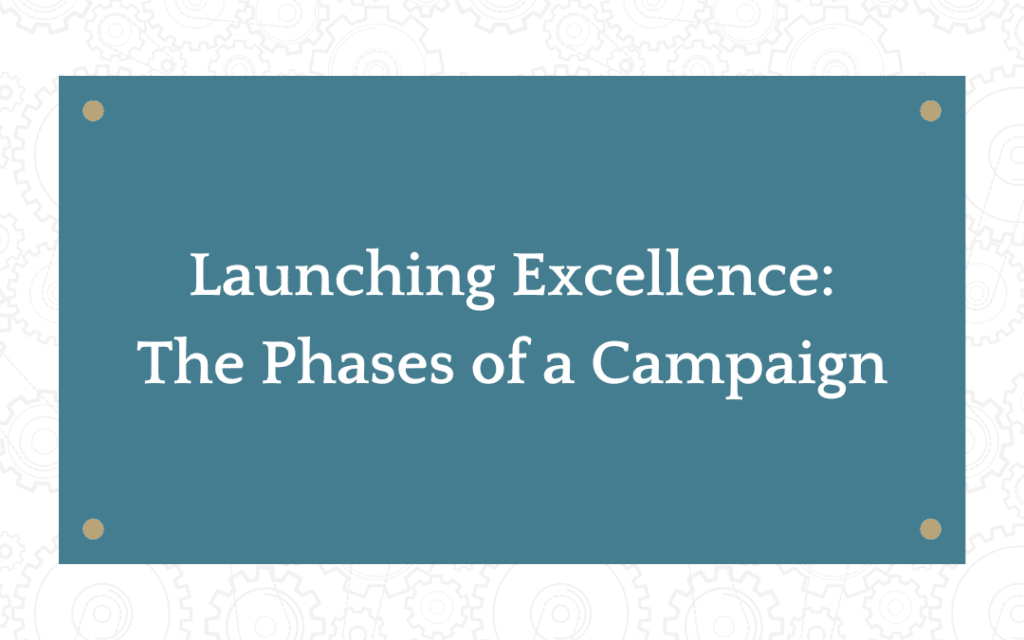As marketers, it’s our responsibility to help our organization, from Product to Sales:
- Reach our target audience
- Make connections that foster brand awareness
- Drive leads to generate revenue
Each marketing campaign presents a new opportunity to achieve this and, hopefully, will result in new visitors to your site and engagement with your sales team and/or product. A lot of work goes into creating a new campaign, and it needs to be executed well; otherwise, you create missed opportunities and revenue. Often, we start strong on the creative, selling the vision for the campaign. Where a campaign is truly deemed successful is often the technology and operations that get the lead and all its information to the right person on the team.
A well-planned and executed campaign is a massive boost for your team’s KPIs and metrics. It directly impacts the goals of your Sales team to help them get the leads they need and move them down the funnel to conversion. That’s why understanding and appreciating the importance of each phase of your campaign cycle, from planning to reporting, is crucial to launching a successful campaign.
Having a process for each step means you can align your entire team from the start and get more out of your work. This helps you meet your audience in a way that drives quality. But it also makes it easier for you to execute campaigns, so you can work on other initiatives (or fit another campaign into your quarter!)
Recommended Watch: Launching Mission-Critical Campaign Operations
Defining the phases of a marketing campaign
First, you should understand what the phases of a campaign are for your organization and what you are trying to achieve. It’s important to explicitly define the purpose of each phase and what outcomes need to be delivered at the end of each one to begin the next. There are general aspects that all teams will include.
Once you have a general blueprint for each campaign step, you can assess how each team member can contribute to its outcome. For some steps, it will be foundationally important that the entire team is involved to effectively proceed with common goals in mind. For others, it may require that certain members take ownership to ensure that it is being managed and getting the necessary follow-through.
Here is a general framework you can start with when planning your Marketing Campaign Phases:
Marketing Campaign Phase One: Pre-launch ideation and planning
Phase one is dedicated to building a solid foundation for your campaign to stand on. It’s best practice to have everyone involved with the campaign play a role here and to keep discussions transparent, so everyone understands the fundamental goals and objectives of the campaign.
We typically recommend hosting a marketing campaign kickoff meeting with stakeholders across the company. Here is who Stack Moxie includes and we always review the toles and expectations of each:
- Product: SMEs, roadmap, delivery timelines, Use Case page & product content
- Marketing: Messaging, content development, campaign execution, operations
- Sales: campaign execution, feedback
- CS: SMEs, Customer stories, content
- Engineering: SMEs, Customer, delivery
Several questions should be asked during this phase to set the direction of the campaign and help you down the road with making decisions on how to execute. This is a great opportunity to crowdsource ideas and get those inevitable “did we think about X” discussions that always come up after you already launched the campaign.
What is the goal of this marketing campaign planning phase?
During the marketing campaign planning phase, you want to make sure you accomplish a few things:
- Messaging framework development: Value drivers, outcomes, capabilities/feature alignment, business value
- Discuss Target personas, internal/external SMEs, customers, co-marketing opps
- Establish Goals
- Discuss appropriate channels and content needs
- Confirm launch date and rolling timeline
- Assign owners and actions items and discuss dependencies
More on marketing campaign goals…
Your goals for your marketing campaign should be as data-focused and specific as possible since it will provide a way to understand whether the campaign was successful and where it can be improved for future iterations. Whether “sell more product” or “increase top-of-funnel leads,” it’s important to put numbers that you can hit or miss.
General, overarching marketing campaign goals may include:
- Promote a new product or feature
- Increase revenue
- Increase the number of customers
- Drive renewals for current customers
- Generate brand awareness
- Increase traffic to the website
- Drive publicity via third-party media
Once you’ve chosen the one that describes your ultimate objective, drill down and decide exactly what “success” means to your team with that context and work with that in mind.
What is our marketing campaign budget?
Before anything else has been planned or created, you need to understand how much budget you can put towards this marketing campaign. Having a number in mind helps your team set expectations for what’s doable and prevents emotion from taking over if and when something needs to be cut or scaled down due to financial constraints.
“Affordable” can be different for each organization or campaign and how major it is. By coming up with a cost-per-lead number, you and your organization can decide what is comfortable and generate a total budget. Usually, you can work backward by calculating an average customer’s lifetime value and estimating how many leads and, from that, how many eventual customers the campaign is expected to bring in.
Who is our target audience for this marketing campaign?
Understanding the general scope of who you want this campaign to resonate with can help you craft compelling messages that speak to them. Demographic details like age, job title, interests, and where these people go for information are all helpful to consider. Building personas for the different buyers you’re targeting will help you understand their pains and needs and allow you to build a campaign that tells them what value they will get out of your product specifically.
Once you have this information, you can narrow it down further by defining:
- The social media they use (Where can you find them?)
- What content do they respond best to?
- What sort of language do they use? Concise? Clever? Serious?
This information makes it easier to deliver your message to the right people and target the correct keywords based on who and what your audience is looking for. It also lets you define a CTA they’re more likely to convert.
Here’s an easy framework we use during our collaborative marketing campaign planing meeting. Any marketing campaign brief should include something similar.

What are the deliverables for this marketing campaign?
With the above questions answered, you can start brainstorming what your campaign will include for content, visuals, promotion, and everything else it takes to deliver it to the world.
This is perhaps the most creative step in the entire campaign since it’s your chance to find new and exciting ways to get your audience’s attention. It ranges from broad aspects, like what the overall concept should be, to how exactly it will get executed in the next phase.
At this step, you can also start deciding who on your team is responsible for which deliverables. Each piece of content will need a manager to make sure it is brought to life on time and with quality. Depending on the scope, copywriters, video editors, graphic designers, and other creative roles will all need to be filled.
This phase can take the most time out of any of them because of the level of detail required to ensure that future steps are done well and without complications. But taking the time is worth it because the more detail you put into it now, the less you will need to figure out later when you can follow your plan.
Phase Two: Creating Campaign Deliverables
After your preliminary planning, it’s time to begin executing your plans to build the content the campaign will be made of. This phase is exciting since you’re creating what your audience will see and ensuring it’s bringing value that will interest them in your brand and product. Still, it is also a lot of work and requires a lot of lead time and resources across the team.
Content to consider as part of your marketing campaign may include:
- Blogs or other written content like white papers or ebooks
- Landing pages and product pages for your prospects to convert on
- Launch emails and their subsequent follow-up emails
- Videos, GIFs, graphics, or other visuals that you can use as part of other content or on its own to drive interest
- Social media posts and cadences to share with your followers
- The workflow automation that your prospects and leads will be brought through to nurture them throughout the campaign and beyond
You should constantly ask yourself what value any given piece of content brings to your audience to ensure it has a place in your campaign. Once your deliverables are decided on, ensure you know what keywords you are looking to optimize for to make it more discoverable and continue bringing traffic to it, even after the active promotion phase is over.
Phase Three: Marketing Campaign Launch Execution
After you have created all necessary assets and set up the workflows and processes to help your leads reach Sales, you’re ready to launch your campaign. This goes beyond simply hitting send on the content you’ve created and includes having and executing a follow-up plan that kicks in as people engage with your campaign.
If people are being driven to request demos, your team must be ready to deliver on that and ensure that the requests are handled as they come in. As you get engagement on social media or emails, a process to respond and drive further interaction is critical to making your campaign’s success last and ultimately providing a return on investment.
It’s also crucial to have ways to monitor the performance of your campaign and collect numbers on the metrics and KPIs you determined in Phase One were most important. Reviewing KPIs along the way helps you understand what worked, what didn’t, and how your target audience responded to your messaging. Most importantly, it helps you understand attribution and your ROI on the marketing campaign.
Phase Four: Measurement and Reporting
After the launch, you should review the analytics and data you collected during the execution phase with your team:
- How many visitors came to your site?
- Which content was most engaged with?
- How many leads did you generate?
- Which emails got the most clicks?
- What is your Cost Per Lead (CPL)?
Understanding the answers to these questions tells you if you met your goals. If you didn’t reach that goal, provide important context for why that may have happened. This phase is usually ongoing since more data will continue to flow in. The longer you allow, the more you can learn about how a campaign influenced your pipeline months later.
After your initial review of the data, it’s best practice to make small, trackable changes in the campaign where possible to continue optimizing it. Potential tweaks to make:
- Update subject lines on emails with low open rates
- Modify the body copy or CTA on emails with low click-through rates
- If you had a lot of bounced emails, clean up your database, so you no longer send to undeliverable emails
- A/B test ad graphics
- Repurpose content
- Change up the target audience or ICP
Holding an official retrospective meeting allows your team to share what they felt worked or didn’t work for future improvements. This also closes the loop for everyone involved, so you are all aligned on how the campaign performed. Giving the entire team this visibility makes future planning even better so that everyone will have the opportunity to develop new ideas informed by older initiatives and drive creativity.

